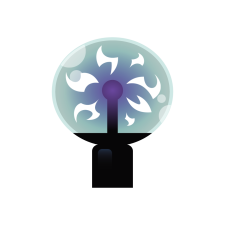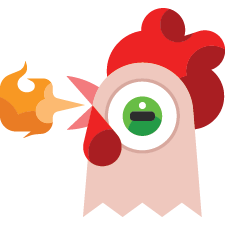Steam installieren
Anmelden
|
Sprache
简体中文 (Vereinfachtes Chinesisch)
繁體中文 (Traditionelles Chinesisch)
日本語 (Japanisch)
한국어 (Koreanisch)
ไทย (Thai)
Български (Bulgarisch)
Čeština (Tschechisch)
Dansk (Dänisch)
English (Englisch)
Español – España (Spanisch – Spanien)
Español – Latinoamérica (Lateinamerikanisches Spanisch)
Ελληνικά (Griechisch)
Français (Französisch)
Italiano (Italienisch)
Bahasa Indonesia (Indonesisch)
Magyar (Ungarisch)
Nederlands (Niederländisch)
Norsk (Norwegisch)
Polski (Polnisch)
Português – Portugal (Portugiesisch – Portugal)
Português – Brasil (Portugiesisch – Brasilien)
Română (Rumänisch)
Русский (Russisch)
Suomi (Finnisch)
Svenska (Schwedisch)
Türkçe (Türkisch)
Tiếng Việt (Vietnamesisch)
Українська (Ukrainisch)
Ein Übersetzungsproblem melden


























Ku is born with Ori and company on Nibel, the original land that Blind Forest takes place on. Because the egg was damaged by the last spirit trees calling out, her right wing is defective and cant fly properly. Ori fixes her wing with her mothers old feather and they get lost on Niwel, a neighboring land who (like last game) has a broken spirit tree. Unlike the last game, the spirit tree is broken because the tree part has died of old age. In this part of the game https://www.youtube.com/watch?v=o8XzTYeAirQ at 2:35 we are told that the light is nothing without its vessel. The vessel of the light is a spirit tree. Next lets look at 3:16 of the same sequence. We are told, “While light is eternal, no vessel can last forever. When the Willow grew old and baron, she could no longer care for her light. It shattered and we became mere wisps of what we once were.” So we learn that the vessels of light are mortal and break eventually. Next lets look at 4:34 of the same video. “The Willow’s children, the Light of Niwen suffered in the decay. The land was buried in darkness and ruin. The spirits were no more and all seemed lost.” So once a spirit tree is gone, the light it holds is shattered and the land falls into decay. The next mural is important (4:55), it shows a picture of Ori and the 5 lights of Niwen. Sein tells us, “But it was foretold that hope would come. Hope would open our eyes to see through the darkness. Hope would return the memory of what was forgotten, and bring us strength when we were weak. That is how the world heals, this is how the cycle continues.” So, from this scene we learn that The Willow has died and Niwen has been in decay for a long time. The only way for it to get fixed is for a new vessel to absorb the light and become the new tree. This is a pretty damn clear foreshadowing of the ending, where Ori becomes the new spirit tree. Upon landing Ori is informed by the Moki that he is the only spirit left in Niwel, see this video https://www.youtube.com/watch?v=N4TKbXtWGV0 at 23:20 . The Moki say, “The light listens to you, you must be a spirit after all, we Moki thought all spirits had gone away from Niwell.” What this is pointing towards is that Ori is the only one, the only spirit, left who can harness the light that restores the forest. This is also a pretty clear foreshadowing that Ori is the last one who can restore things. Additionally, upon absorbing the light from the first tree (the ones that give you new moves) we are told by the Moki, “You are not like the others, the howler, the shrieker (this is clearly referring to the Howl the wolf and Shriek who battled the night you landed, you can find Howl turned to stone later in the game by Shriek) . In you shines an ancient light. The tree remembered, it knowed, it glowed. It has shared it memory with you. Now use the light, we want to see.” The Moki here say that the spirit trees share their memory with us, because we are a spirit. Remember that Sein tells us in the cave that there is a prophecy of one who will restore the memory of what was lost? All this clearly points that Ori is the only one in Niwen who can restore Niwen. This is the ending of the game, he is the only one who can save Niwen and everyone in it, so he does so by turning into the vessel for the light. This ending was already decided upon before the game had even been created, see https://www.gamespot.com/articles/ori-and-the-will-of-the-wisps-story-goes-in-a-diff/1100-6474508/ . I think this ending is pretty well foreshadowed after replaying the game and seeing all the hinting at it. I never really realized because in Blind Forest there is no need for a vessel. As it says in that article the devs created Blind Forest not expecting a sequel, so they kind of changed the way spirit trees work in this game from Blind forest by not requiring a vessel in blind forest. We all were used to the way trees worked in Blind Forest so we did not realize what they had been foreshadowing. I think its also really important to note that even though Ori is a tree, he still is a conscience being, given that has been narrating the story the whole time. Also I do not think Naru, Gomu and Ku’s sadness was because of Ori turning into a tree. If you watch the final cutscene again ( about 8 minutes into this video https://www.youtube.com/watch?v=xUsajmGHRIU ) We see that they are sad because they think Ori is gone, but once they see that he is the new spirit tree they immediately are turned to happiness. I see the ending as a happy one, Ori is a living, conscience tree, who saved the forest and more importantly Ku. He also has more little spirit ‘babies” if you will. This is just the end of the game, I dont think the devs put much relatable life themes into this part of the ending. But lets look at the story of Shriek and the other characters in the game because that is where I think they put the heavy themes, like in the last game.
The message of the first game was about sacrifice. This game has a message of accepting change and getting over things. Obviously, we see this with Shriek, she is rejected at the beginning and because of this she becomes bitter against the light of Niwen. She sees what she hates in Ori and especially Ku, which is why she tries to kill Ku. Ori still offers her acceptance, but at this point she has become so bitter that she rejects it. I think this is a really good theme, all of us in our lives have had this happen. We let our bitterness get in the way of ourselves and ultimately it ends badly, as it did for Shriek. Shriek was not willing to change for the better and she pays the price. The song that accompanies Shriek’s final cutscene is titled, “Remaining in Darkness,” which pretty clearly shows the message the devs were trying to get across. Ori on the other hand accepts his fate and saves the forest. The music for this scene is titled, “Ori, Embracing the Light” so Ori embraces the light and Shriek rejects it and stays in darkness. Thomas Mahler was asked about the story and what themes there were in it as opposed to the previous game ( https://www.gamespot.com/articles/ori-and-the-will-of-the-wisps-story-goes-in-a-diff/1100-6474508/ ), he said, “it's a much bigger theme that is more about life in general” I think that the theme is exactly what he said it was, something broader than the last game that applies to general life more than the first game. Idk why a few people didn’t like the ending or thought it came out of nowhere. I think the ending was pretty well foreshadowed and had great themes. When Shriek curls up in the owls arm my jaw dropped. I was really moved by that just like the last game.
I think the people that did not like the ending didn’t like it because they did not pay attention to the dialogue throughout the game (I didnt either). The ending definitely did not come out of nowhere, there is an entire scene in the desert cave foreshadowing/explaining it, along with plenty of other references from the Moki throughout the early game. I agree that the plot has some holes in it but looking at the way the Moon Studios made Ori those make sense. They did not expect success from Ori, so they had to change the way the world worked to make the second ones ending make sense. Some sort of definitive edition to sort some plot holes out would be great.
The map doesn’t feel much bigger as such because we are early given the opportunity to teleport and many abilities give us tremendous speed, or allow us to travel a long distance at once. Which does not make a big card as such a plus. Its otdelny sites also come to a standstill, and do not smoothly flow into each other (which is much more difficult to do from the point of view of game design).
The new combat system is interesting gameplay, but because of it, “plot” holes again begin in both games at once.
Hollow knight does not have much lower qaulity the spritework, but uses a completely different style that cannot be so easily compared. This comparison was much more appropriate for Yoku's Island Express, where you can immediately see what the developers were inspired by. The only objective difference between Ori and HK (apart from the fact that one game is pure 2d and the other 2,5d) is how many plans are simultaneously involved on the screen and how much of this background is animated. In Ori, there are almost always 3 plans (front / middle / background) and it is almost all animated, which makes the world seem so alive to us. In HK, there are basically only 2 plans (front and back). But anyway, comparing them stylistically is a little stupid occupation because it is a matter of taste.
As for the Ori bosses, I won’t say anything, I remind you that there were 29 of them in HK without dlc (maybe 5 points less, but this is the maximum). And at the same time ~ 140 original ordinary enemies. That as if levels that Moon Studios worked mainly on visuals, and Team cherry on filling.
The fact that combat in hollow knight is pretty simple, on the contrary, is the main plus, because often the philosophy of such a game is that - easy to learn hard to master. And HK is doing it very well.
About the fact that few movements is also a plus, because the game is not overloaded with unnecessary abilities. And if you think that they are few, then you probably have not experimented with charms. https://www.youtube.com/watch?v=XMzS2Fra-WE&t=1s
In Ori, all the variability of weapons and abilities ends after the first passage (maximum by the middle of the second) because you find the strongest build in the game. https://www.youtube.com/watch?v=iwTJoqzSTH0&t=4s I think every 2-3 players already managed to try it out for themselves. In HK, there are at least 3-4 main builds for the situation (the main ones that are directly famous) - maximum lives (to survive platforming), magic build (to replenish souls faster and quickly destroy ordinary opponents) and build on attack speed and damage in close combat (in which most bosses die much faster and easier). In Ori, only 1 is the most optimal build, which shows how much the other abilities are simply not needed.
The fact that the gameplay was ready in 2018, I also know, but since they had 2 more years of free time for polishing, why couldn't they fix the biggest flaws in the plot that caused the ending to suffer? After all, I already gave an example of how I do not change history as a whole, it was possible to change just a couple of substances and the ending would already look as it should (for the most part). And you confirmed my words that it was easy to do it "they could patch up pretty easily." But THEY DIDN'T DO IT.
To your question about whether the game is getting worse, I will answer in the same neutral and logical way. On the part of the gameplay - no, everything is played in the same way as in the first part, but with small additions, that is, nice and good. On the plot side - yes. But you see what the problem is, the first part of Ori was remembered by people because of visuals, music and its beautiful history. Because Ori is a game driven by history, not gameplay (like DOOM, metroid etc where the plot we need only conditionally), and therefore, if its history is the weakest side, then the game as a whole is not particularly successful. After all, the situation with FF15 is absolutely the same. Absolutely the same plot, absolutely the same steep ending with self-sacrifice with poor foreshadowing, which they also give us only in the end. And people around the world began to riot. Developers tried to fix the matter with PAID PLOT dlc, but as a result, the last dlc season was also canceled. But the game looks, sounds and plays well. The difference between Ori and FF15 is only in their sizes. In Ori, the story goes much faster and therefore most players do not notice errors in the script. FF15, however, takes about 90 hours and therefore such an ending is by itself not what you expect to receive.
But by the end of FF15 became a "mediocre disaster", and the new Ori - "another masterpiece."
I also said that the ending itself is not bad, and its message too. The problem is how we were let down to her and in her performance. Again, if you do as I wrote earlier (comment # 510 page 17), then the ending from this looks much more appropriate and much more emotional. At the same time, the end of the game and the plot as a whole (as well as its message) DO NOT CHANGE ABSOLUTELY. At the same time, it is very easy action, which could be implemented without problems. But since we know that the ending is taken from the first part (with the exception of the scene from Shriek), logically this immediately clarifies why it "escalated so quickly". Which just reinforces the suspicion that the game was completed in a hurry and this ending was used as a life buoy (after all, it was already ready from the time of the first game).
Quic Edit: Taking the name of a musical composition for foreshadowing is nonsense. I hope you do not need to explain why this is so.
i wasnt saying hk was bad its just not as high quality graphics/gameplay wise. Ori has way more advanced lighting and visuals, why do you think reccomended specs is a gtx 970? Its not just a different style there is an actual visual difference between the 2. Also combat wise ori was definetly better. The sheer number of ways you can evade and then dive back in for a slam or something is definetly superior to hollow knight. Hk is much more mechanical than Ori, Ori flows better. Musically the game was definetly better than blind forest. Sure Light of Nibel was amazing but there was way more variety in this game.
The songs at the end of Wisps were also amazing in my opinion. There was a ton of new melodies and great new music. More than the first game for sure. If you ask me the only thing i missed from the first soundtrack was the theme on "Restoring the Light, Facing the Darkness." Also ye they totally had time to fix the plot holes i never said they didnt, they just didnt think of it. Just because there is no explanation given doesnt mean there isnt an explanation for why the Willow didnt cycle by itself. Maybe they thought it was too much detail and didnt want to bore players. Most people arnt reading into the game nearly as deep as us.
No the scene in the cave is super obvious foreshadowing even without playing it, and is a good 2 hours from the end of the game. We learn in advance, so its foreshadowing... How early do you need to be spoiled on the end of the game? I think the part in the tunnel is early enough from the ending. 2 hours is like 1/5 of the game, i finished it in 9 hours. I agree that I am reading into the Moki's lines after already knowing the end but its still hinting at it from the start, which complements the sand cavern nicely.
edit: yeah i didnt use music titles to prove foreshadowing, did you read my post that was just my opinion on the themes of the game. Just a touch i used to prove my point....
If I had a cent for every time someone on the Internet said "These are the rules of X and I'm the deity of Xness, therefore what I say is the absolute truth" (replace X with foreshadowing)...
2: It must lead to a single, irrefutable conclusion.
3: It must be direct, but subtle."
Like wtf as i showed ori starts subtle with comments from the Moki, then gets a ton more obvious with the sand tunnel scene near the end. It is direct and subtle. and it leads to a solid conclusion.
There are also plenty of people ive seen who played the game and saw the direction the game was going in before the end. The sand scene is pretty clear. I had no ♥♥♥♥♥♥♥ clue what was going to happen in Blind forest, the end suprised me a ton and was not any more foreshadowed than this game. This game literally had an entire room dedicated to foreshadowing the end. Wisps > Blind Forest if you ask me.
@It is direct and subtle -> it because they did not pay attention to the dialogue throughout the game (I didnt either) @ If it is so straightforward and subtle, why did so many people unnotice it and why did bad foreshadowing pop up from the beginning of this topic? Moreover, it was from people who know how to delve into the history of the game, which means they clearly paid attention to details and dialogs.
@1: It must start early. -> the sand tunnel scene near the end@ One of the rules has already been violated (Gehenna also wrote why the other 2 rules were violated)
In the first game, it should not be clear that a “twist” should occur (which is not there, but which “is in the second game”). But at the same time in the game the whole story went smoothly and evenly. That is why the ending does not cause any questions and confusion (especially after a full analysis of the plot). Indeed, the goal of Ori is only to restore the tree (and it makes no difference to us by Ori or Kuro) from which only 2 options follow - we can save the forest / we cannot save the forest (It must lead to a single, irrefutable conclusion.). There are absolutely no other options. We can say that I myself am breaking the rule now, but no, because it is one and the same action but mutually exclusive (coming out of only one goal). But we don’t have any options by type - Ori must sacrifice himself / Ori will suddenly call upon the sword of light and kill Kuro / Kuro will unexpectedly be the previous “god of light” and therefore she will resurrect the tree. And if we substitute the original ending of the game (I don’t change stories), then we will get the same thing that we got in the second game (only the “graves” of spirits themselves would be the only foreshadowing). In the second part, the goal is the same - to save the willow, but the problem is that we learn that it will not be saved after 90% of the game (that is, our goal has changed dramatically to save the whole island). At the same time, we learn about self-sacrifice only from the willow itself, that is, it is already 100% of the game (since there is only a fight with the boss). Prior to this, we were only shown a fresco where 5 willow fragments revolve around the spirit, which at the moment of history (and receiving the last fragment after 5 minutes) is interpreted as "returning Seir to its original form by collecting all these fragments", but not fuse with Seir .
@But it was foretold that hope would come @ Yes, and hope is depicted here as a spirit, but again not as a merger of a vessel and a source of power.
@Hope would return the Memory of what was forgotten, and bring us strength when we were weak. @ Seir and willow are forgotten, because a lot of time has passed since the disaster itself (Shriek managed to grow to an adult). Seir also seems to us only after we assembled it whole, which indicates that the source of power itself (and not its fragments of seclusion) has a different memory and a different consciousness (after all, in fact, it has become a different creature). And as for the strength, this is precisely the reunion of all the fragments of Seir, a further scene in the desert with the way he drove off the storm and hit Shriek to confirm this.
The next fresco is final and on it we see blooming willows (nowhere near there is a fragment on which the merger of Ori and Seir is depicted at least partially).
@The Gorlek builders knew that all things broken could be pieced back together. Here they proteckted the most fragile wisp, the Heart of the forest. We sense its presence nearby, Ori. The light will be whole once more! @ It’s just about collecting all the “fragments” into a single whole - Seir.
Also, the theme of self-sacrifice is not traced in the game. There is an idea of self-sacrifice, but not tama. The theme goes through the game from start to finish. The idea pops up at a particular moment and after that often doesn’t make much progress.
@But during the Blind Forest development, it became obvious that [the game] became the story about two mothers that, at the end, will finally face each other and [in] some way, one inspires the other. It just made sense to end [the game] in that way, where [one] mother is now taking care of the [other's] child. @ That is the theme of mothers.
In the second part, in our game no one sacrifices himself to continue the cycle (with the exception of Kwolok - he dies aimlessly for the sake of a "fight with the boss"). The bear is still alive and sleeping, he does not sacrifice anything to save his own forest. The spider just gives a splinter and also remains alive. The worm was simply crushed, as it is part of the wild fauna. Therefore, the topic of self-sacrifice (which would greatly help with foreshadowing) is simply not there (remember that there is an idea that is shown at the very end).
But on the whole game we have a family theme, which began in the first game. Ori has a whole family - Gumo, Ku, Naru. Kwolok is the "father" for Moki. After a fight with a spider, we can talk with her children, who will tell us something (that is, she also shows her family). The hub itself is a location and its construction so that "all the inhabitants" of the island live in it. This topic is very clear, but it does not receive development in the final, because we are shown only the old Ori family, and that’s all. They don’t show us how moki are doing or what happens to the spider. Not. They just show us the old family, since we are emotionally attached to them after the first game, but in this game we see them much less than our hub location with Moki.
I also want to add about your big comment.
@ you can find Howl turned to stone later in the game by Shrek @ Wrong. Shriek didn’t turn anyone into stone, it made a “swamp” (especially considering that half of the wolf’s body is in it, and we use it as a platform). In the game, we were clearly shown that Shriek is an owl and it is predatory. They showed us how to chase a mosquito and showed how she eats a worm in her hunting grounds. Why would she turn Moki (they are small) into stone, and not eat them as befits an owl?At the same time, we are shown as soon as we get to this location how Shriek breaks one of the houses in search of prey. And the house with moka absolute is whole and its door is locked. Why, then, she killed Ku, and did not turn her into a Stone, and we would look for a way to correct this condition (which, by sense, does not change the game, but at least there was confirmation that Shriek turns it into stone). Why doesn’t she have any tricks related to slowing down (a fossil analogue) when fighting with her? So you give out too many for what you want to see yourself.
Hang on I gotta talk about this. Ori beat hollowknight in gameplay? I hope you're joking because absolutely no one will take you seriously after that little bout of insanity.
As for the graphics? I liked Hollow Knight more, and yes I will freely admit that the world of Ori is very beautiful. Hollow Knight is simple, but the world of Hollow Knight was drawn with a fully fleshed out world whereas Ori felt like a copy/paste sequel with cookie cutter zones.
Also, the moldwood depths is just a deepnest clone showing how derivative Will of The Wisp is.
yeah i liked ori more than hollow knight. Everything you said is up to opinion really. I loved Hk too i just thought ori was better visually and gameplay-wise. You can disagree its not an objective fact.
To be honest in terms of platforming Ori is much better than Hollow Knight and you cant denied that, although in terms of combat HK shines although Ori is also quite good in terms of combat.
Both HK and Ori looks great and it is hard to say which is better, because we have 2 different artstyles.
After reading some of posts I think the best solution would be releasing a DLC about a guardian from Niwen who refused a gift from the Willow and tried to find its own way to keep balance (interesting would be if it would be a guardian from which we get sword, because Ori reaction on light from this tree was different than from others). It has to be subtle, so we wont know that this gift was the entire light of Niwen.